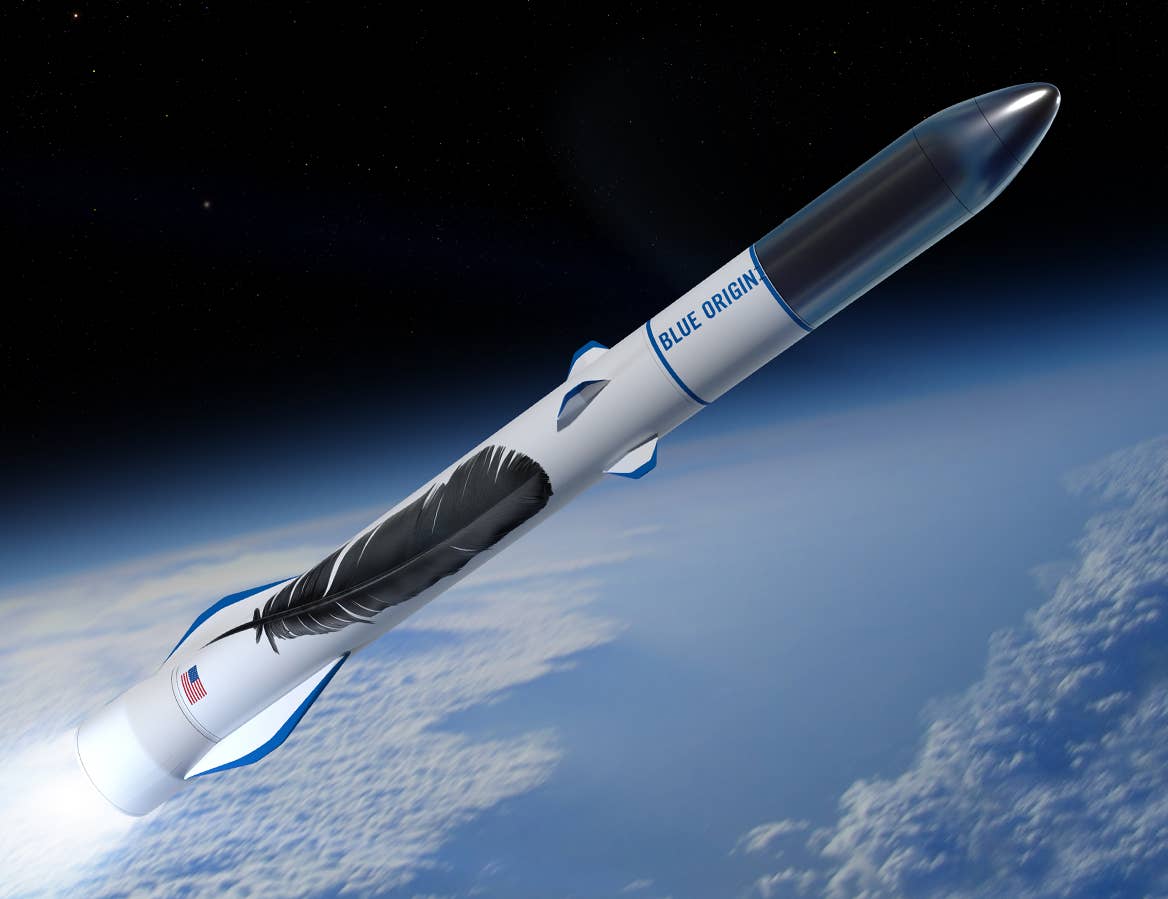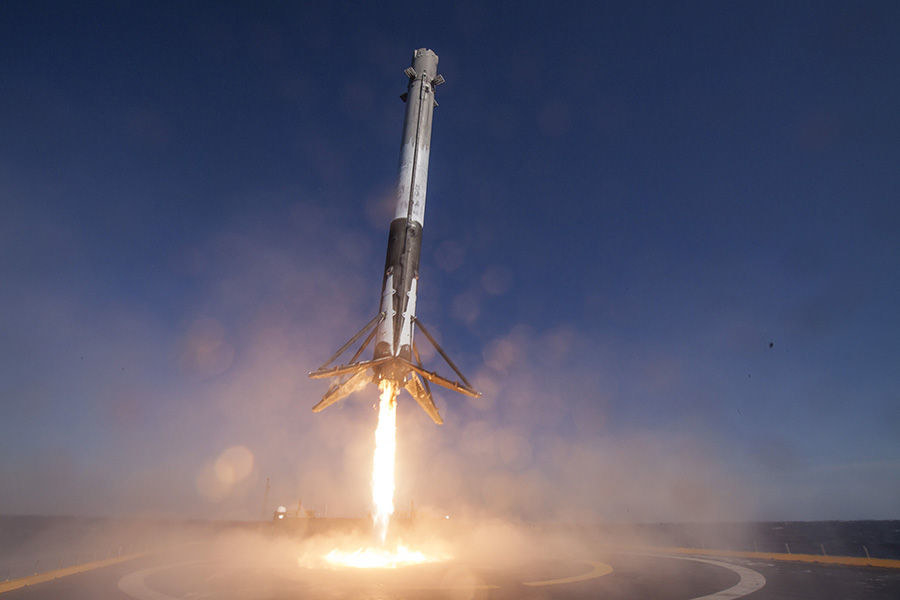
The Trump administration will jump into the new space race on Thursday, at the first meeting of the National Space Council since the early 1990s.
As NASA has faded from political importance in the intervening decades — sending rovers to Mars, building rockets that never launch, and keeping alive a space station that the public doesn’t care about — a billionaire-backed commercial space industry has suddenly bloomed. Just last week, SpaceX chief Elon Musk laid out crazily ambitious plans for lunar and martian colonies, calling for humanity to become a “multiplanet species.”
The revived council, chaired by Vice President Mike Pence, “will provide an opportunity for the Administration to lay out its vision for space exploration,” Pence said in a statement.
There’s a lot on the line. US military satellites face new threats of jamming from potential rivals such as China and Russia, who are also working on new anti-satellite weapons. NASA must decide whether to keep the International Space Station (ISS) working after 2024, and whether to send astronauts to the moon or Mars.
And perhaps most complicated: Trump’s space team will have to figure out how to best nurture the growing private space industry that was built with NASA seed money. Elon Musk’s SpaceX, for example, is building a jumbo rocket, known as Falcon Heavy, seen as a competitor to NASA’s own Space Launch System (SLS) rocket. The Falcon Heavy will first launch by the end of the year, promising to deliver 70 tons of cargo into low Earth orbit. The SLS, a 77-ton lifter, has been delayed until 2019 for its first uncrewed flight.
A third private rocket, the reusable New Glenn now under construction by Jeff Bezos’s Blue Origin, is sneaking up on the others with a planned launch in 2020. Last month Blue Origin signed up its third customer, a telecommunications firm based in Thailand.
Although anything could happen at Thursday’s meeting, it’s unlikely that Trump will pull back US space projects, experts say. The council includes several big names, including Secretary of Defense James Mattis, Secretary of State Rex Tillerson, and Office of Management and Budget Director Mick Mulvaney.
“There is something inside this administration that likes NASA.”
“There is something inside this administration that likes NASA,” space policy historian John Logsdon of George Washington University told BuzzFeed News. The agency escaped the deep budget cuts Trump had proposed for other science agencies, he noted, and Pence has visited two NASA centers, the second one just last week.
The major private space companies, meanwhile, are building machines and planning decades-long missions — roles once reserved for government agencies and traditional defense contractors.
Despite acknowledging the difficulties in building Falcon Heavy, Musk played “top this” at a big Australian conference last week by unveiling sketches for a “BFR” rocket (where the B stands for “big”), with an “aspirational” goal of it landing passengers in 40 cabins on Mars within five years. He unveiled a cartoon of a growing Mars colony and showed real footage of the Raptor rocket engine that would blast the BFR on its voyages.
But not everyone thinks Musk can pull off this vision.
“There’s a line between ‘aspirational’ and ‘preposterous’ and Elon is walking on it with that time frame,” space policy Marcia Smith of SpacePolicyOnline.com told BuzzFeed News. It’s also unclear whether SpaceX customers will be happy with the firm’s choice to move away from its successful, reusable Falcon 9 spacecraft, with 13 launches this year, she said. (Musk argues the BFR will be able to do all the jobs of the other rockets, but far more cheaply, pound for pound of cargo. Meanwhile, he will stockpile Falcon 9's for more cautious customers.)
Musk’s BFR would launch 150 tons of cargo into low Earth orbit, useful for launching hundreds or thousands of satellites at once. This feat would be helpful for transmitting the internet from space or mining asteroids. Or it could potentially rocket business passengers around the Earth in 30 minutes, supplanting commercial airlines. Other new firms run by plutocrats are building hardware ranging from inflatable space habitats made by Bigelow Aerospace (owned by a hotel magnate) to a rocket plane for space tourists developed by Virgin Galactic (owned by celebrity rich guy Sir Richard Branson).
“It’s finally happening — what we were promised two or three decades ago with the commercial space sector,” University of Colorado space policy expert Phil Larson, formerly with both SpaceX and the Obama administration’s Office of Science and Technology Policy.

The advent of the private space industry offers both challenges and opportunities for the Trump administration. The president and officials — such as NASA director nominee Jim Bridenstine, a former Oklahoma congressman — have spoken positively of these new entrants into the space business. “We’re a nation of pioneers, and the next great American frontier is space,” Trump said in June, signing the executive order reactivating the council.
The council’s direction for US space efforts is expected to affect the choice of rockets used in NASA and Defense Department launches. Rejecting the snazzy ones from Musk and other newcomers would please senators and congressmen from states (often conservative ones) where the older industries reside. But that might throttle an opportunity that offers cheaper rocket launches to taxpayers.
A similar decision will lead to a new engine for Boeing and Lockheed Martin’s new Vulcan rocket, intended to replace the Atlas V now lofting US spy satellites into orbit. A competition pits Blue Origin’s innovative BE-4 engine against a conventional one made by older rocket maker Aerojet. The decision is so sensitive that jokes about it led to the resignation of a top Vulcan engineer last year.
Likewise, a competition is shaping up between the Lockheed Martin “Orion” space capsule, which NASA is developing for the SLS, and space capsules such as SpaceX’s Dragon, the Sierra Nevada Dream Chaser shuttle, and venerable Boeing’s Starliner. As the last entrant in that derby shows, the older firms are stepping up their game in the face of competition: Lockheed unveiled its own Mars base proposal last week in Australia.

“All of these kinds of decisions — the moon versus Mars, SLS vs some other rocket — are just part of the larger discussion of the US direction in space,” Logsdon said.
Thursday’s deliberations will only really make a difference if the agencies who show up for Vice President Pence this week continue to care when the cameras are off, Logsdon added. “If there is no central focus, then all the agencies will go their separate ways, with less benefit for the country overall.”
One hint of NASA’s new direction might come from Trump’s appointment of former agency official Scott Pace as executive secretary to run the council. In past comments to BuzzFeed News, Pace has favored the US returning its space exploration efforts to the moon as a way to draw in international partners, rather than skipping the moon for a more direct drive toward Mars, which was the plan under Obama.
The moon was in the air at last week’s Australia conference. Musk, who has said he hopes to die on Mars, revealed a design for a moon base. “It’s 2017. We should have a lunar base by now,” he said.
Even Andy Weir, author of The Martian, which inspired the 2015 Matt Damon film of the same name, has changed his tune. His next book, Artemis, out in November, is a crime thriller set 70 years from now on a space tourism moon base. A moon base could make money that way, he added, if space launch prices continue to drop, making a two-week lunar honeymoon just $70,000.
“I don’t see any way you can colonize Mars without going to the moon first,” Weir told BuzzFeed News. “The moon is actually very nice. It’s like the universe left us a stepping stone right next door.”

